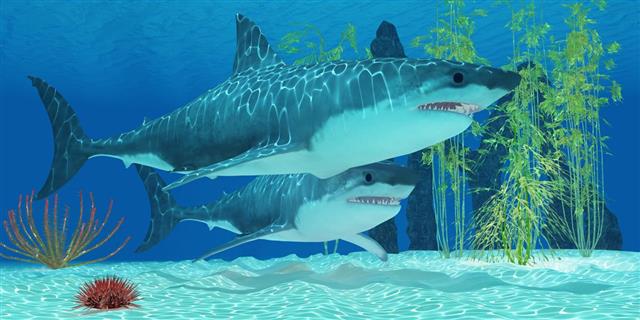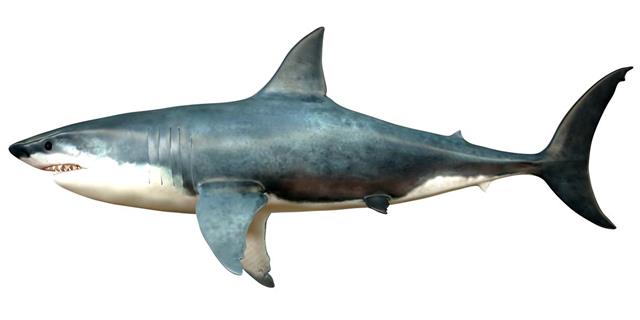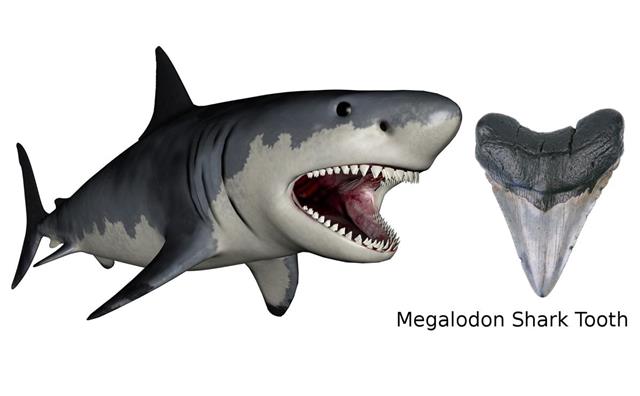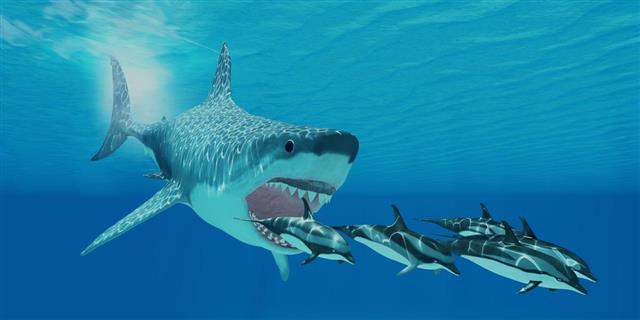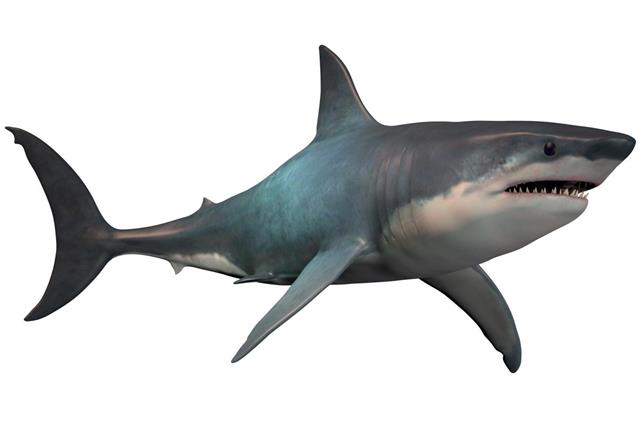
Megalodon is a species of shark that terrorized the oceans in prehistoric times. There are many fascinating facts regarding this mammoth creature, which was once feared by the other inhabitants of the ocean.
The largest carnivorous fish that ruled the oceans, once upon a time, is the megalodon shark, whose scientific name is Carchaodon megalodon. The unique feature of this prehistoric fish, that made it stand out of the crowd, was its massive and strong teeth. Hence, it has got its name megalodon, which in Greek means ‘big tooth’. This mammoth fish existed around 25 to 1.5 million years ago from the Miocene to Pliocene era and began to vanish from the face of the earth towards the end of the Pliocene epoch. According to paleontologists, the megalodon was the most powerful and biggest predators in the history of the vertebrates. Since the megalodon had a skeleton made of cartilage, it could not fossilize well and the information gathered about this fish could be only found out from the fossils of its teeth and vertebral centra (occasionally found), excavated from various parts of the world.
Classification of Megalodon
The megalodon can be classified taxonomically as given below:
| Kingdom: | Animalia |
| Phylum: | Chordata |
| Sub phylum: | Vertebrata |
| Class: | Chondrichthyes |
| Sub class: | Elasmobranchii |
| Order: | Lamniformes |
| Family: | Lamnidae |
| Genus: | Carcharodon |
| Species: | C. megalodon |
Interesting Facts about Megalodon
When the scientists stumbled upon the fossils, mainly the teeth, of the megalodon, they were completely bewildered at the size of the teeth. A detailed research on this prehistoric, extinct fish revealed the size of this lethal predator.
- The megalodon was the biggest fish, with a heavy skeletal structure, bearing a close resemblance to the great white shark, but only in appearance. This giant cartilaginous fish was approximately 20.3 meters (67 feet) long and weighed about 70 tons, equal to 7 adult African elephants. The shark also had well-developed, large and thick fins that helped in the easy navigation of its monolithic body.
- This predator fish had a massive jaw with 3 to 4 rows of teeth, which were replaced constantly. The teeth were made of bone like materials and covered with a layer of hard enamel. The weight of a single tooth was approximately one pound and was almost 7.5 inches long. These teeth were bigger and thicker as compared to the shark. The jaws, which were attached to the skull could be opened so wide (approximately 6 feet wide and 7 feet high), that a great white shark could be swallowed whole. These sharks never chewed their prey but bit them in chunks before swallowing.
- Though the main diet of the megalodon shark consisted of whales, it also fed on dolphins, smaller sharks, sea lions, seals and at times even sea turtles. To hunt a prey, the shark used its strong teeth and large tail. The tail was used for immobilizing the prey after which it was grasped in its robust dentition.
- The megalodon survived well in the warm ocean water areas. During the breeding season, this fish preferred the warmer coastal region, where food would be plenty. The young megalodons were called pups and would be 7 to 10 feet (2 to 3 meters) long, at birth. These pups would prey on dugongs, fish, giant sea turtles and small cetaceans.
- Many paleontologists and researchers believe that climatic changes were a main cause for the extinction of the megalodon shark. During the early Pliocene era, as ice caps began to form, the temperature in the oceans began to drop. The other fish began to migrate to other seas leaving the shark without food. Since this ‘king of the sea’ could not adapt well to the temperature changes and food depletion, this species began to perish until it became extinct.
This great predator has been wiped out from the face of the planet and can be now found only in museums, where the fossils of the megalodon are preserved. The extinction of this shark may also be a boon (if we do not take the gene pool loss in consideration), as it is hard to imagine the havoc it might have created if it were alive and swimming fearlessly in the oceans!
